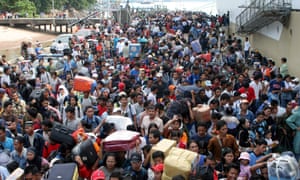Current Unit of study: Unit 2
The population growth bomb exploding in Ethiopia
Synopsis
Since 1994/95, the age structure of Ethiopia has been constantly changing, and since then the growth bomb has been ticking as well. This has many causes, access to education, jobs and housing being one of the many reasons. But as of recently, Ethiopia has started to experience an increase in its working age population in association to its dependent members of the population. Thankfully, this increase is very balanced, almost at knife edge since the early 2000's. Now, thanks to the sudden eruption of the population, Ethiopia's percentage of young adults has increased to 51% meaning that the country has many more citizens working rather than citizens relying on few who are still able to work.
Analysis
Ethiopia has thankfully become more and more stronger, and that's all thanks to this sudden eruption in the population. With this movement, Ethiopia has a greater number of people within the working age than a dependent population. This has only benefits, as we've seen before with countries with more of a graying than dependent population struggle to keep their economy and work force strong, young and up to certain demands.



